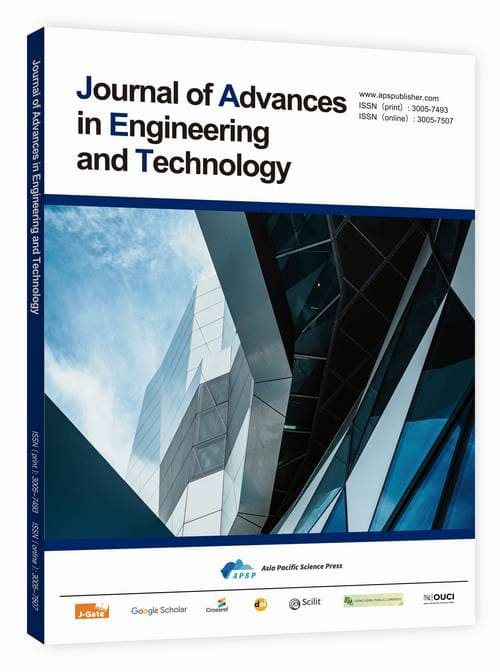Explainable AI for Battery Degradation Prediction in EVs: Toward Transparent Energy Forecasting
DOI:
https://doi.org/10.62177/jaet.v2i3.478Keywords:
Explainable AI, Battery Degradation, Electric Vehicles, SHAP, LIME, Predictive Maintenance, Energy Forecasting, LSTM, GBM, Battery Health ManagementAbstract
The rapid growth of electric vehicles (EVs) has intensified the demand for accurate and interpretable battery health prediction systems. While machine learning models have demonstrated high accuracy in forecasting battery degradation, their “black-box” nature poses challenges for real-world deployment in safety-critical applications. This paper proposes an explainable artificial intelligence (XAI) framework for battery degradation prediction, aiming to provide transparent and reliable insights into energy storage dynamics in EVs. The study integrates data-driven models such as Gradient Boosting Machines (GBMs) and Long Short-Term Memory (LSTM) networks with post hoc explainability tools, including SHapley Additive exPlanations (SHAP) and Local Interpretable Model-agnostic Explanations (LIME). Experimental evaluations on real-world EV battery datasets show that the proposed framework achieves strong predictive performance while offering interpretable outputs regarding feature influence and degradation dynamics. These findings suggest that XAI-enabled models can bridge the gap between predictive power and trust, contributing to smarter battery management systems and sustainable transportation.
Downloads
References
Finegan, D. P., Zhu, J., Feng, X., Keyser, M., Ulmefors, M., Li, W., ... & Cooper, S. J. (2021). The application of data-driven methods and physics-based learning for improving battery safety. Joule, 5(2), 316-329.
Silfvenius, C. (2024). Some Critical Thinking on EV Battery Reliability: from Enhancement to Optimization--comprehensive perspectives, lifecycle innovation, system cognation, and strategic insights. arXiv preprint arXiv:2401.04998.
Menye, J. S., Camara, M. B., & Dakyo, B. (2025). Lithium Battery Degradation and Failure Mechanisms: A State-of-the-Art Review. Energies, 18(2), 342.
Wu, B., Qiu, S., & Liu, W. (2025). Addressing Sensor Data Heterogeneity and Sample Imbalance: A Transformer-Based Approach for Battery Degradation Prediction in Electric Vehicles. Sensors, 25(11), 3564.
Ahwiadi, M., & Wang, W. (2025). Battery Health Monitoring and Remaining Useful Life Prediction Techniques: A Review of Technologies. Batteries, 11(1), 31.
Gagulic, D. (2023). Computing the Trustworthiness Level of Black Box Machine and Deep Learning Models (Master's thesis, University of Zurich).
Longo, L., Brcic, M., Cabitza, F., Choi, J., Confalonieri, R., Del Ser, J., ... & Stumpf, S. (2024). Explainable Artificial Intelligence (XAI) 2.0: A manifesto of open challenges and interdisciplinary research directions. Information Fusion, 106, 102301.
Dwivedi, R., Dave, D., Naik, H., Singhal, S., Omer, R., Patel, P., ... & Ranjan, R. (2023). Explainable AI (XAI): Core ideas, techniques, and solutions. ACM Computing Surveys, 55(9), 1-33.
Njoku, J. N., Nwakanma, C. I., & Kim, D. S. (2024). Explainable Data-Driven Digital Twins for Predicting Battery States in Electric Vehicles. IEEE Access, 12, 83480-83501.
ŞAHiN, E., Arslan, N. N., & Özdemir, D. (2025). Unlocking the black box: an in-depth review on interpretability, explainability, and reliability in deep learning. Neural Computing and Applications, 37(2), 859-965.
Ncube, M. M., & Ngulube, P. (2024). Enhancing environmental decision-making: a systematic review of data analytics applications in monitoring and management. Discover Sustainability, 5(1), 290.
Barzacchi, L., Lagnoni, M., Di Rienzo, R., Bertei, A., & Baronti, F. (2022). Enabling early detection of lithium-ion battery degradation by linking electrochemical properties to equivalent circuit model parameters. Journal of Energy Storage, 50, 104213.
Brosa Planella, F., Ai, W., Boyce, A. M., Ghosh, A., Korotkin, I., Sahu, S., ... & Richardson, G. (2022). A continuum of physics-based lithium-ion battery models reviewed. Progress in Energy, 4(4), 042003.
Thottempudi, P., Acharya, B., & Moreira, F. (2024). High-performance real-time human activity recognition using machine learning. Mathematics, 12(22), 3622.
Tan, Y., Wu, B., Cao, J., & Jiang, B. (2025). LLaMA-UTP: Knowledge-Guided Expert Mixture for Analyzing Uncertain Tax Positions. IEEE Access.
Bergen, K. J., Johnson, P. A., de Hoop, M. V., & Beroza, G. C. (2019). Machine learning for data-driven discovery in solid Earth geoscience. Science, 363(6433), eaau0323.
Rauf, H., Khalid, M., & Arshad, N. (2022). Machine learning in state of health and remaining useful life estimation: Theoretical and technological development in battery degradation modelling. Renewable and Sustainable Energy Reviews, 156, 111903.
Wang, J., Tan, Y., Jiang, B., Wu, B., & Liu, W. (2025). Dynamic Marketing Uplift Modeling: A Symmetry-Preserving Framework Integrating Causal Forests with Deep Reinforcement Learning for Personalized Intervention Strategies. Symmetry, 17(4), 610.
Palaniappan, R. (2024). Comparative analysis of support vector machine, random forest and k-nearest neighbor classifiers for predicting remaining usage life of roller bearings. Informatica, 48(7).
Madani, S. S., Ziebert, C., Vahdatkhah, P., & Sadrnezhaad, S. K. (2024). Recent progress of deep learning methods for health monitoring of lithium-ion batteries. Batteries, 10(6), 204.
Malik, K., Sharma, M., Deswal, S., Gupta, U., Agarwal, D., & Al Shamsi, Y. O. B. (Eds.). (2024). Explainable Artificial Intelligence for Autonomous Vehicles: Concepts, Challenges, and Applications.
Xing, S., Wang, Y., & Liu, W. (2025). Multi-Dimensional Anomaly Detection and Fault Localization in Microservice Architectures: A Dual-Channel Deep Learning Approach with Causal Inference for Intelligent Sensing. Sensors.
Longo, L., Brcic, M., Cabitza, F., Choi, J., Confalonieri, R., Del Ser, J., ... & Stumpf, S. (2024). Explainable Artificial Intelligence (XAI) 2.0: A manifesto of open challenges and interdisciplinary research directions. Information Fusion, 106, 102301.
Jin, J., Xing, S., Ji, E., & Liu, W. (2025). XGate: Explainable Reinforcement Learning for Transparent and Trustworthy API Traffic Management in IoT Sensor Networks. Sensors (Basel, Switzerland), 25(7), 2183.
Grigoryan, G. (2024). Explainable Artificial Intelligence: Methods and Evaluation (Doctoral dissertation, Old Dominion University).
Rauf, H., Khalid, M., & Arshad, N. (2022). Machine learning in state of health and remaining useful life estimation: Theoretical and technological development in battery degradation modelling. Renewable and Sustainable Energy Reviews, 156, 111903.
Wang, J., Zhang, H., Wu, B., & Liu, W. (2025). Symmetry-Guided Electric Vehicles Energy Consumption Optimization Based on Driver Behavior and Environmental Factors: A Reinforcement Learning Approach. Symmetry.
Nguyen, V. N., Tarełko, W., Sharma, P., El-Shafay, A. S., Chen, W. H., Nguyen, P. Q. P., ... & Hoang, A. T. (2024). Potential of explainable artificial intelligence in advancing renewable energy: challenges and prospects. Energy & Fuels, 38(3), 1692-1712.
Wang, Y., & Xing, S. (2025). AI-Driven CPU Resource Management in Cloud Operating Systems. Journal of Computer and Communications.
Downloads
How to Cite
Issue
Section
License
Copyright (c) 2025 Olivia Chen, Jacob Reid, Anna Meier

This work is licensed under a Creative Commons Attribution-NonCommercial 4.0 International License.
















